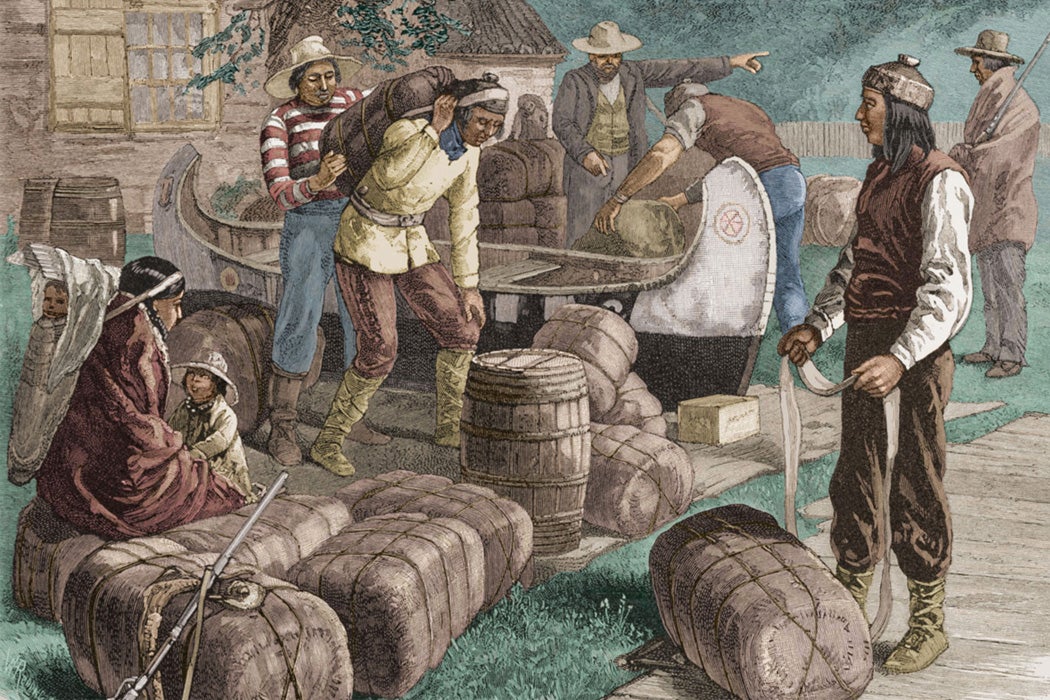If you ask a modern American for the most basic explanation of how trade works, they might tell you something like this: Henry plants an apple orchard and grows as many apples as he can. Then, he trades them with anyone who wants apples, getting something equally valuable in return and making both parties richer in the end. But the truth is, that’s just one model. As the ethnohistorian Mary K. Whelan writes, in nineteenth century America, this way of looking at trade clashed with a very different one.
Whelen looks at relations in nineteenth-century Minnesota between white fur traders working for the American Fur Company and Oceti Sakowin, or seven fireplaces, people. Unlike in the Euro-American economic model, Whelen writes, the Oceti Sakowin only traded among people with kinship bonds, thereby incurring various mutual obligations. To enter into trading relationships, white fur traders became part of the family, often through marriage to Oceti Sakowin women. Marrying into a family meant that a trader’s relatives were obligated to trade with him, while he was obligated to provide gifts and support as needed.
Weekly Newsletter
This sometimes led to clashes. Among the Dakota, for example, individual accumulation was a serious offense. However, fur traders controlled warehouses full of merchandise that they didn’t distribute among their kin. When Oceti Sakowin called for equitable sharing, white American traders labeled this an irrational demand. As one white missionary rather bluntly put it, “they thought the resources of a white man inexhaustible.”
Different conceptions of reciprocity and debt also confused trade relations. Where the American Fur Company expected accounts to be balanced at the end of each year, ongoing debt was a good thing in the Oceti Sakowin system, since it maintained social ties and a sense of mutual obligation. Fur traders were frequently frustrated at their inability to get Dakota to pay their debts on time each year. Eventually, that resulted in congressional legislation that let trading companies collect unpaid debts from government annuity payments to Native nations—essentially forcing them into the Euro-American concept of debt.
Another area where the two economic models clashed was in production levels. Euro-American economics is all about the allocation of limited resources in the face of unlimited wants. But, Whelen writes, to the Dakota, wants were limited while resources were bountiful. The task was not to efficiently harness resources but to “establish and maintain proper kinship relationships” with plants, animals, and deities. That meant that, even if there was a large European demand for furs, other social, political, and religious activities often took precedence over maintaining relationships with fur traders through trapping.
“Trapping was not a ‘business for profit’ among the Dakota but primarily a social exchange,” Whelen writes. Ultimately, the Euro-American system won out through simple violence, with the military forcing the Oceti Sakowin from much of their land. But, as the continuing fight over the Dakota Access Pipeline’s path through Dakota and Lakota land suggests, the clash between profit-oriented Euro-American economics and other ways of thinking about the material world continues.







